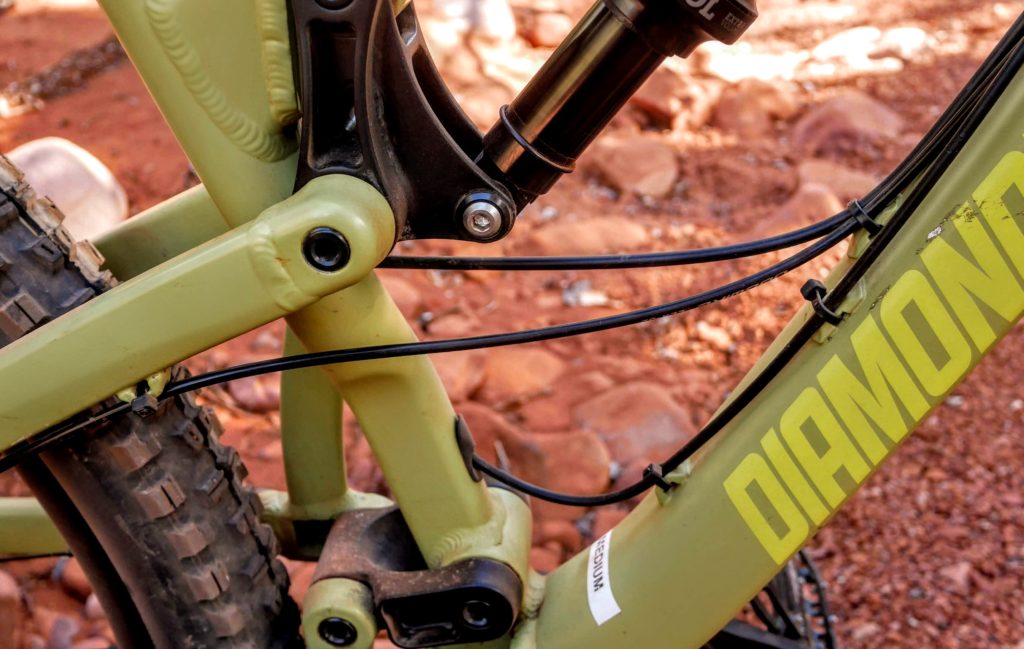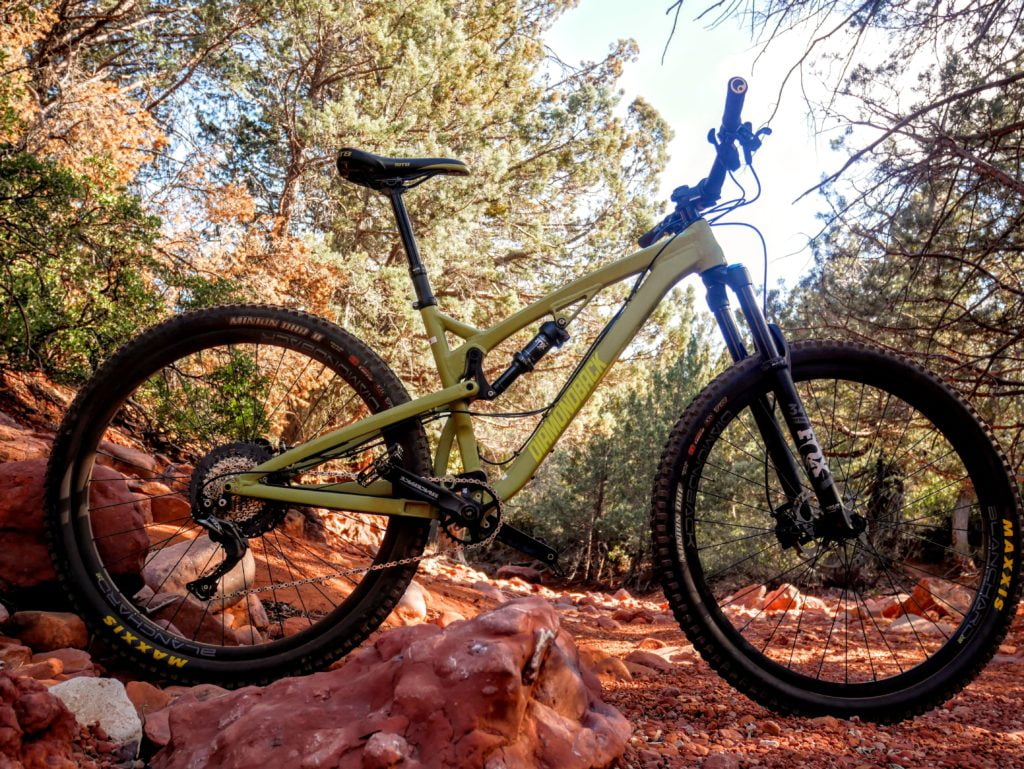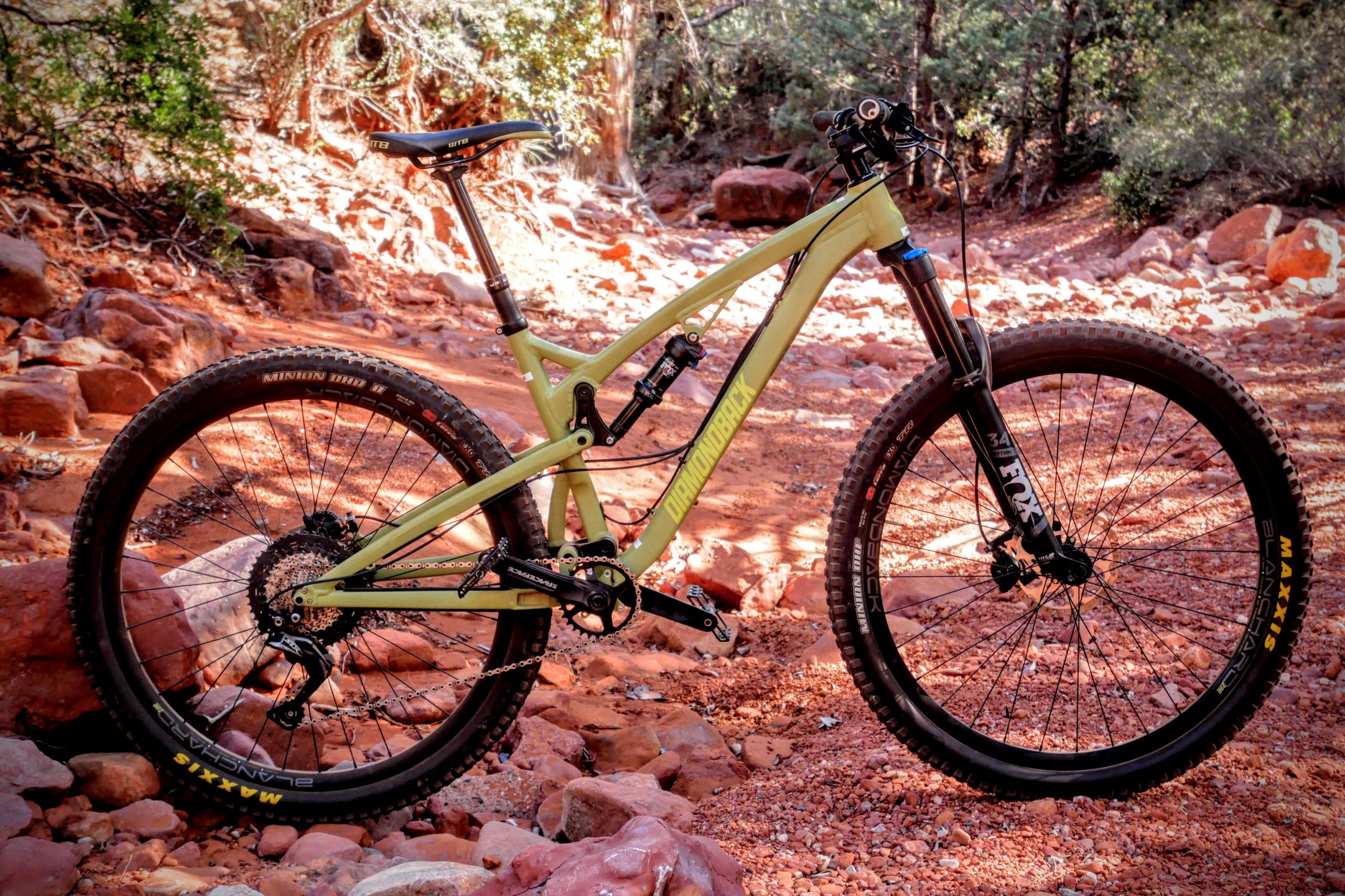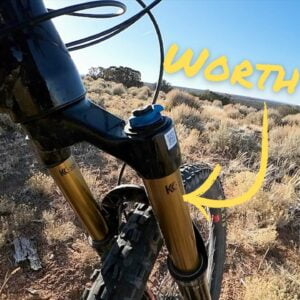Diamondback has recently seen a resurgence in popularity. Their level link suspension system made them again a legitimate player in the trail bike category with their 27.5 Release bikes. Diamondback however has been noticeably missing a 29er equivalent. The Release 29 is their answer, but how does it perform?
The Release 29 is actually based around the same frameset as the 27.5+ Diamondback catch. I believe Eric Porter was riding one of those frames with 29er wheels before the Release 29 was announced. Diamondback wouldn’t give me a straight answer on if the frameset was exactly the same front and back or if anything was re-engineered. The exact same 200×57 size shock is used on both bikes, so the linkage I can assume is pretty close to identical. The geo chart suggests that the bikes are VERY similar.
Geometry and Frame Design
This is unfortunately, in my estimation not a great thing. Looking at the bike on paper the geometry looks pretty dated. The reach on the medium I tested is only 427mm. Seat tube angle leans back at 73 degrees trying to compensate for that short reach.
The problems with the seat tube don’t end with the angles. The design of the level-link suspension means that there is a kink in the middle of the seat tube. As I tested the size medium bike the problems with this kink were immediately apparent.

The first bike I got on, the dropper post wouldn’t even function because the actuation cable was jammed against that kink. The second bike I swapped to I found that even with the dropper inserted as far as I could without damaging the post I was still left with several inches of post above the collar. This resulted in me not being able to get the dropper inserted far enough for my 5’10” frame to fit on the size medium bike.
I am not afflicted with dwarf legs and have never encountered this issue on other size medium bikes. The lack of flexibility of this frame was disappointing. I ended up riding the bike for the day constantly babying the dropper into a comfortable position.

Diamondback bills themselves as a value based brand, but speccing a bike with a dropper that won’t fit an average rider is a big miss. Most people purchasing this bike will not want to have to go out and replace their dropper out of the box just to fit on the bike.
The build of the bike has some other odd decisions. The Shimano SLX 11 speed drivetrain was decidedly mediocre and shouldn’t be found on a $2,800 bike. The fox suspension setup was a great choice but, the wheels, frame and other components mean that the entire package feels heavy and sluggish on the trail.
Ride Quality
Some bike feel so amazing on the way down that the weight going up is worth it. Unfortunately, the Release 29 didn’t fit this bill. Undergunned in the suspension and geometry departments for true big mountain enduro riding and way to heavy to be considered a good budget trail machine the Release 29 felt like it was decidedly mediocre everywhere. There are a plethera of purpose build 29ers on the market at competitive prices
The level link suspension was fine but didn’t have any special magic. I think in this case the suspension platform was held back by so many other compromises in this bike.
The short reach could have made a different bike feel snappy and maneuverable. Unfortunately, in this case it mainly felt short.
I really wanted to like the Release 29. I came into riding the bike with high hopes that this would be a great trail 29er. At every turn through, I was left disappointing. I would recommend waiting on the Release 29 till Diamondback reconfigures the frameset with a purpose build 29er design.
Pros:
- Good suspension spec
- Competative Price
Cons:
- Heavy
- Seat tube does not allow full insertion of dropper
- Poorly specced drivetrain
- Unsorted geometry with slack seat tube






Yea diamondback is a dead brand among mountain bikers. And this bike just reinforces that they are a company not a bike enthusiasts company.
I own a Diamondback 29 2 and I can tell you the brand is far from dead. This bike rips on the trails and at $2800 I’d like to see a brand that can compete with this build.
I own the Release 29 2. I have read probably 5 to 8 published detailed reviews on this bike and your review is the first negative review I have read. I have a size large frame with the 170mm dropper and mine fits flush with no issues. At $2800 you would be hard pressed to find a build like this. The SLX drivetrain is Shimano’s top 3 drive trains and compared to Sram’s GX the SLX is in the same range. I’ve seen builds at this price offer either the SX or Deore. The SLX breaks provide excellent stopping power and with tubeless tires this bike weighs in at just under 33.5 lbs. The Santa Cruz high tower with comparable build weighs in at the same weight and costs $4200. I’ve rode the Santa Cruz high tower and compared it to my bike and I could barely tell a difference since both share virtually the same exact suspension design the geometry is a little different with a slacker head tube on the Santa Cruz and a steeper seat angle but other than that the suspension on the Diamondback performed excellent on climbs and descents so I’m not really understanding how you can say you would expect more at that price. Diamondback has really stepped up their game when they introduced the Catch and Release models sporting their version of the expired VPP Santa Cruz patent. The level link suspension performs great and I haven’t ridden a full suspension bike that climbs as well as these. The Fox suspension and Maxxis tires make this a well rounded ripper for under $3000. Just my opinion.
I will have to disagree with this review as well. I own a diamondback release 29 2 and will have to say it’s a very nice bike. Is it a high end enduro?… No. Is it a downhill demigod?… No. Is it a well rounded, nicely equipped full suspension mountain bike with an exceptional price tag?… Absolutely. I have friends with bikes that have similar components, at near DOUBLE the price I paid. I have ridden their comparable bikes, they have ridden my release 29 2. Overall the consensus is the same, “sweet bike!”. While their bikes are every bit as nice, It would be hard to say they are better. Of course the geometry will be somewhat different from bike to bike, each company claiming they have the best. This will be a preference, and if you have the cash to throw down 4-6K on a similarly equipped bike as the release and be able to choose what geo fits you and your riding style the best, then I say by all means go for it. But make sure you get the release 29 in your lineup, because I think it will surprise you and your friends. I used to rent bikes when going on out of town or shuttle rides, but I prefer this bike so much more than most of the name brand bikes that the bike shops are renting, that I almost always bring my release with me. I really don’t understand the negative review. I have no issue with my dropper post, it rips downhill, climbs like a champ, and I find the geo to be very balanced. The negatives I can say about it are: it’s a little heavy, at 34 lbs it’s no boat anchor but it’s not considered lite (find me a 29 full suspension bike in this price point that is). The shimano SLX is awesome at shifting and is very durable, but I feel the brakes could be a little more grabby, I have no issue locking up either tire but I feel the SRAM sx is a better brake. The name brand wheels are fine and come tubeless ready but certainly leave room for an upgrade in the future and you could most likely shed some weight here as well. In my opinion (I’ve been riding for about 15 years and have owned/ridden several different brands) the Release 29 is a fantastic bike and considering the price, which is a huge consideration for most riders, it’s an exceptional bike.
I always love to hear people are enjoying riding their bikes. And my reviews are never meant to make someone feel bad about their bike. Reviews are always about sharing an experience. Here’s a bit of insight into why I’m so critical of bike geometry https://everydaymtb.com/opinion-geometry-is-free/